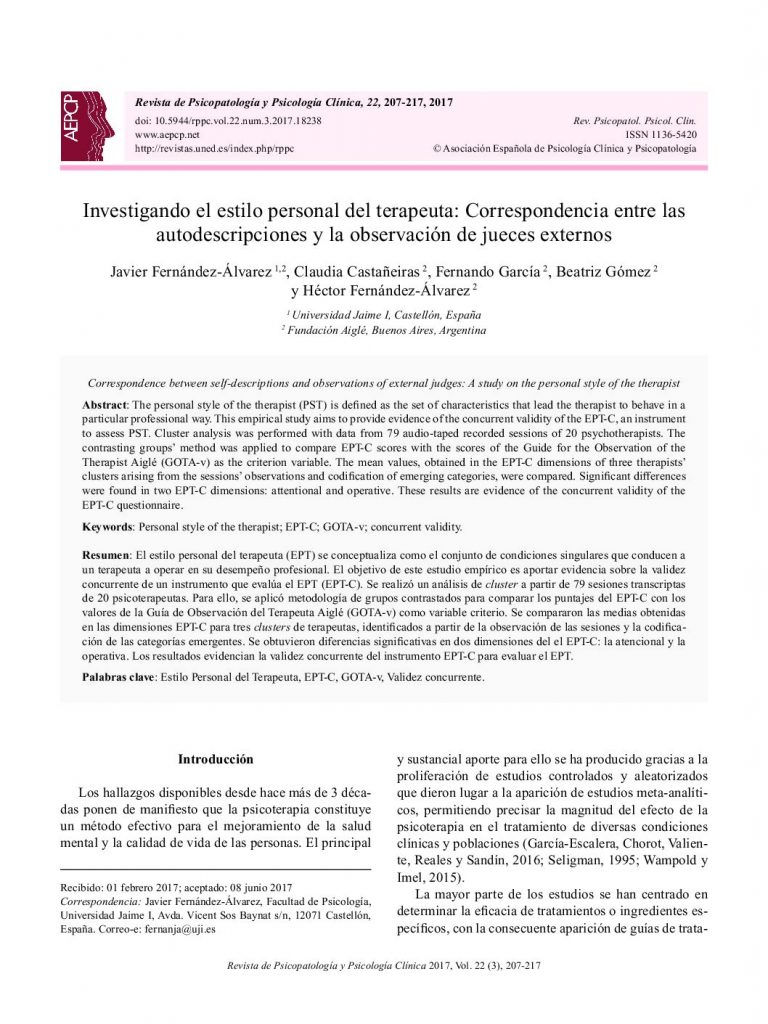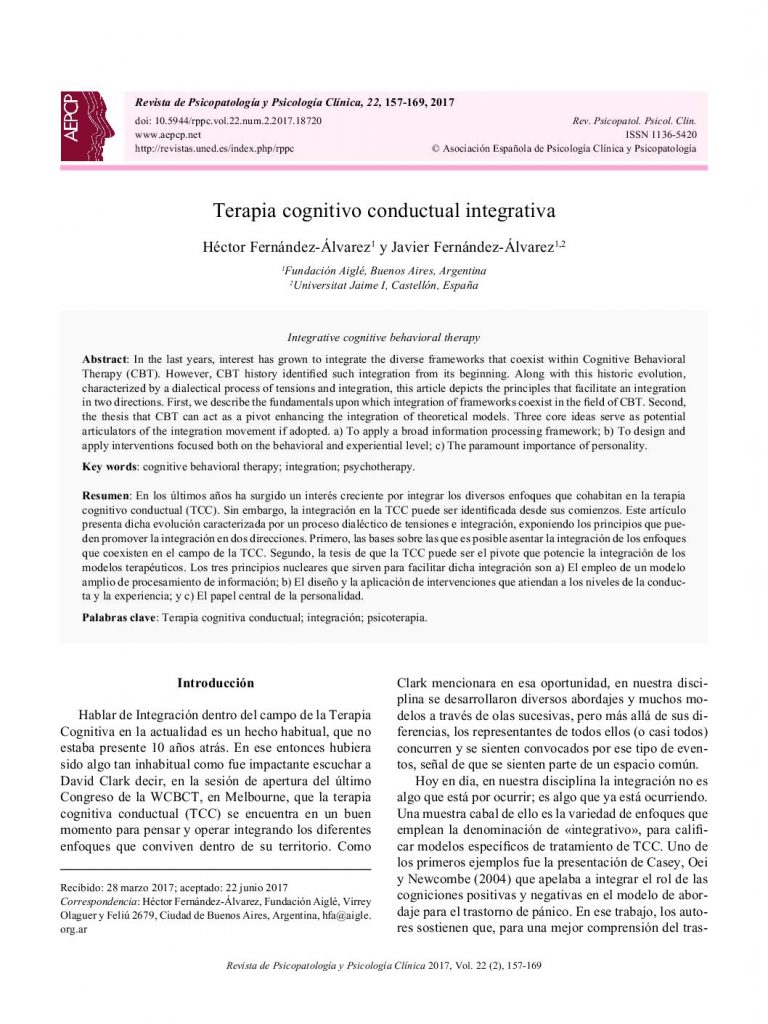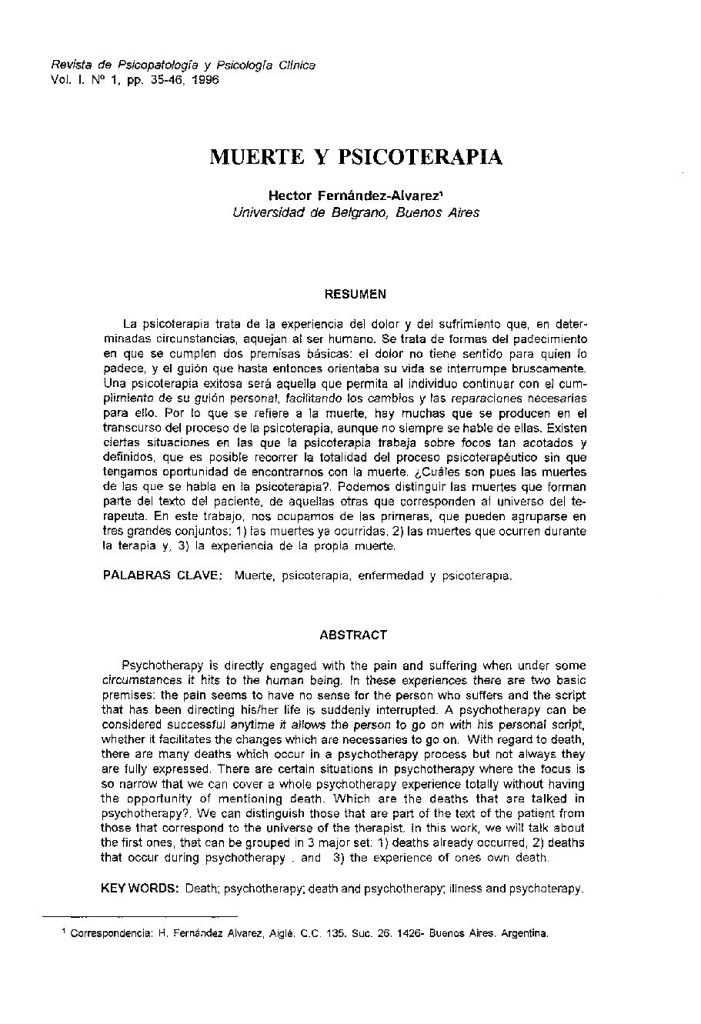Investigando el estilo personal del terapeuta: Correspondencia entre las autodescripciones y la observación de jueces externos.

- Confirmatory factor analysis and psychometric properties of the Revised Child Anxiety and Depression Scale−30 (RCADS-30) in clinical and non-clinical samples
- Perfiles de personalidad y síndromes clínicos en personas sin hogar.
- Investigando el estilo personal del terapeuta: Correspondencia entre las autodescripciones y la observación de jueces externos.
- Aplicación grupal del Protocolo Unificado para el tratamiento transdiagnóstico de los trastornos emocionales en población argentina.
- Efectos de un programa de formación de padres para reducir conductas perturbadoras infantiles.
- Relación entre variables sociodemográficas, patogénicas y salutogénicas, con la calidad de vida en estudiantes universitarios colombianos.
- Revisión de los procedimientos observacionales y cognitivos para la evaluación de la ansiedad social.
- Información sobre los índices métricos de la Revista de Psicopatología y Psicología Clínica.
The personal style of the therapist (PST) is defined as the set of characteristics that lead the therapist to behave in a particular professional way. This empirical study aims to provide evidence of the concurrent validity of the EPT-C, an instrument to assess PST. Cluster analysis was performed with data from 79 audio-taped recorded sessions of 20 psychotherapists. The contrasting groups’ method was applied to compare EPT-C scores with the scores of the Guide for the Observation of the Therapist Aiglé (GOTA-v) as the criterion variable. The mean values, obtained in the EPT-C dimensions of three therapists’ clusters arising from the sessions’ observations and codification of emerging categories, were compared. Significant differences were found in two EPT-C dimensions: attentional and operative. These results are evidence of the concurrent validity of the EPT-C questionnaire.
El estilo personal del terapeuta (EPT) se conceptualiza como el conjunto de condiciones singulares que conducen a un terapeuta a operar en su desempeño profesional. El objetivo de este estudio empírico es aportar evidencia sobre la validez concurrente de un instrumento que evalúa el EPT (EPT-C). Se realizó un análisis de cluster a partir de 79 sesiones transcriptas de 20 psicoterapeutas. Para ello, se aplicó metodología de grupos contrastados para comparar los puntajes del EPT-C con los valores de la Guía de Observación del Terapeuta Aiglé (GOTA-v) como variable criterio. Se compararon las medias obtenidas en las dimensiones EPT-C para tres clusters de terapeutas, identificados a partir de la observación de las sesiones y la codificación de las categorías emergentes. Se obtuvieron diferencias significativas en dos dimensiones del el EPT-C: la atencional y la operativa. Los resultados evidencian la validez concurrente del instrumento EPT-C para evaluar el EPT.





